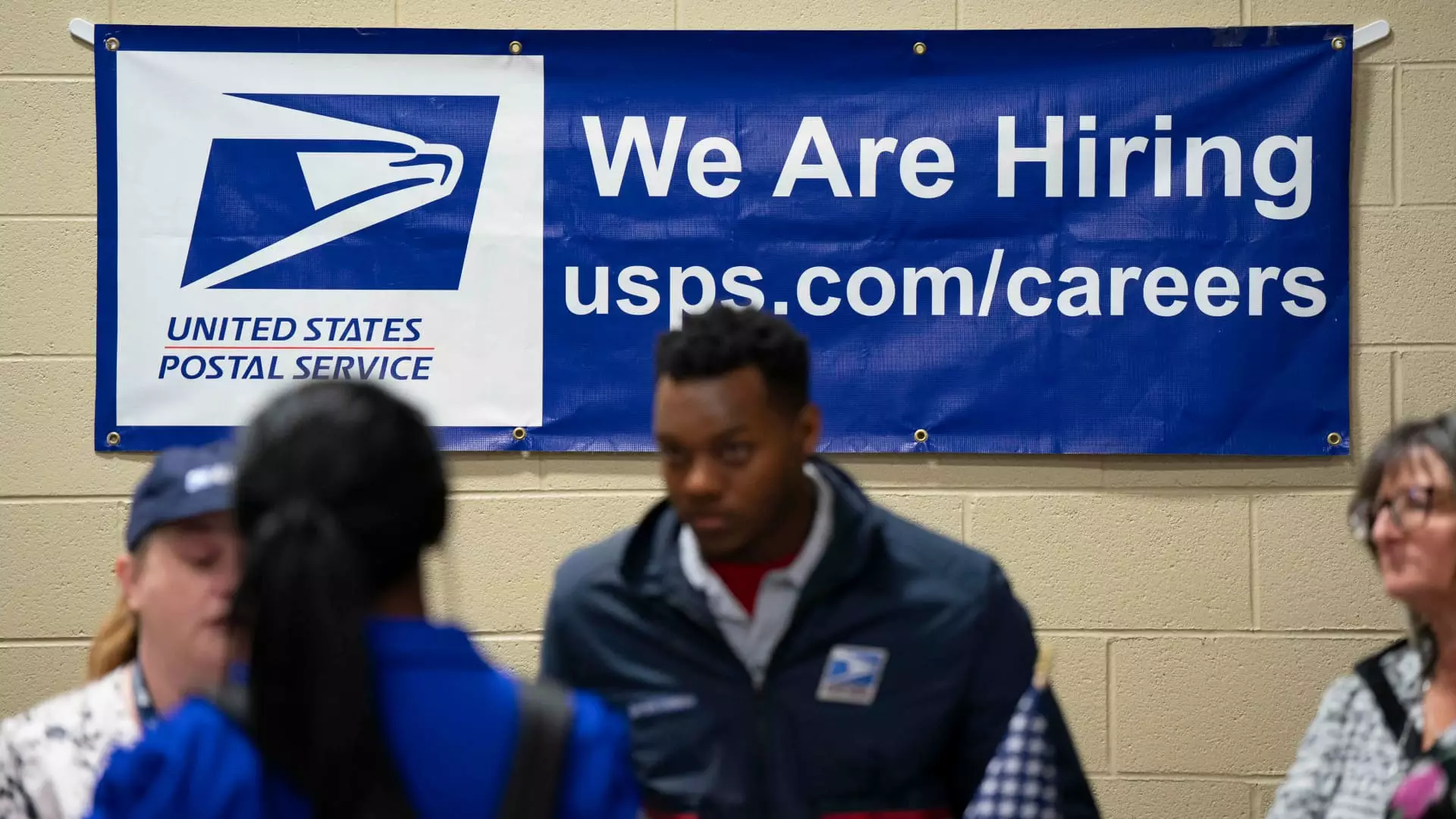Recent labor statistics reveal a landscape of employment growth that, while seemingly promising, may be more superficial than substantial. The Bureau of Labor Statistics highlighted a modest increase of 139,000 nonfarm payrolls in May, which surpassed Dow Jones’s expectations but ultimately fell short of robust economic health. Amid discussions of tariffs and an uncertain economic horizon, the unemployment rate lingered at 4.2%, a figure that carries with it a veneer of stability. However, beneath this façade lies an unsettling trend that raises significant eyebrows regarding the actual strength of the job market.
In analyzing the specifics, it is essential to note that this modest increment in job creation comes after downward revisions for previous months—April’s numbers were trimmed by 30,000, while March’s were revised by a staggering 65,000. This downplaying of earlier gains suggests that the labor market’s resilience is not as firm as optimistic interpretations would have us believe. The adjustments hint at persistent vulnerabilities that could easily shift the narrative from cautious optimism to creeping apprehension.
Sectoral Disparities Reveal Underlying Weaknesses
Looking deeper into the job numbers, we find that not all sectors are thriving equally. The health care sector, which added 62,000 jobs—exceeding its annual average—stands out positively. Conversely, the public sector is experiencing a concerning contraction. Job cuts in government roles, amplified by initiatives aimed at streamlining the federal workforce under the current administration, resulted in a loss of 22,000 jobs. This broad dismissal of government employment raises questions about the long-term impacts of such austerity measures on public services and economic stability.
While industries like leisure and hospitality appear to be growing, we must question the sustainability of such sectors, especially in the face of rising economic headwinds. The injections of new jobs are largely reliant on consumer spending, which can be fickle and deeply influenced by overarching economic sentiments. If consumers are hesitant, the buoyancy of these industries will undoubtedly falter.
The Glaring Contradictions in Employment Data
The conflicting data sets between the establishment survey, which informs payroll gains, and the household survey, which gauges unemployment, expose discrepancies that cannot be ignored. For instance, the household survey indicated a loss of roughly 696,000 workers, which starkly contrasts the seemingly positive narrative of burgeoning job numbers. Full-time employment experienced a concerning decline of 623,000 positions, drawing attention to the nature of these job gains. Are they primarily part-time positions, symptomatic of an economy struggling to provide full-time stability, or are they merely transitory roles that lack the security desired by the workforce?
The notion that job numbers can serve as a reliable indicator of economic health is increasingly questionable. The contradiction between the establishment and household surveys suggests that the job market may be more precarious than optimistic narratives would suggest—a realization that demands a more serious reckoning with our economic policies.
The Impact of Tariffs and Economic Anxiety
Current economic policy, particularly the imposition of tariffs, has created an atmosphere of uncertainty. While the statistics may paint a picture of resilience, the overarching sentiment among consumers and business leaders is one of anxiety. As they brace against the impacts of tariffs, projections of inflation loom large, complicating the established narrative of steady job growth. Each measure designed to protect American industries arguably contributes to an environment that stifles growth in other sectors.
Federal Reserve officials are navigating this landscape with caution, indicating their own concern over inflationary pressures exacerbated by tariffs. Their upcoming policy decisions will be critical in shaping the economic future. However, the prospect of interest rate hikes further complicates an already fragile labor market. The confusing interplay between tariffs, inflation, and interest rates amplifies the challenge of forging a coherent economic strategy, leading to an inevitable wrestling match between policy makers and the realities on the ground.
As the narrative unfolds, it becomes increasingly clear that the job market, though appearing to defy gravity, rests on precarious ground. Without addressing the structural weaknesses within our economy, particularly in response to external shocks and internal disparities, this so-called resilience may soon give way to a more troubling reality.


Leave a Reply